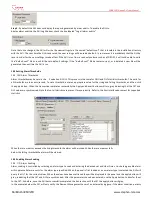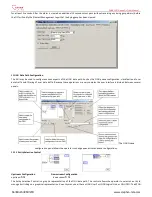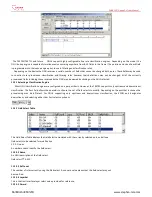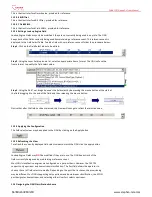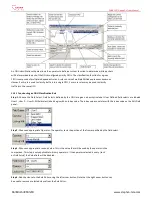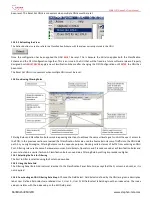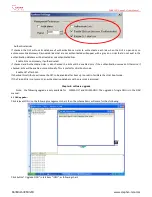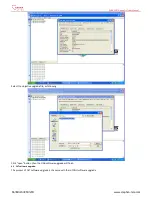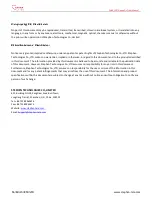
SNA8110T Gepon OLT User Manual
陈泽科技有限公司
www.stephen-tele.com
capabilities and limitations of each chipset when designing filtering schemes.
11.4.5 Deleting a Filtering Rule
Once a filtering rules has been added the rule may be deleted by selecting it from the Rule Grid and clicking the Delete button.
Once the rule has been successfully deleted it will be removed from the Rule Grid.
12 IGMP
EPON chipsets include an RFC 2236 compliant IGMP solution that leverages the power of the underlying hardware classifiers,
shapers and priority FIFOs to deliver high quality IP multicast content over EPON. From a functional perspective the feature set
may be roughly divided into 4 broad classes of functionality:
1. Control over IP multicast data traffic at the network and customer edge.
2. Burst protection for customer premise equipment (CPE.)
3. Scheduling of IP multicast data traffic.
4. Aggregation of reports sent by CPE, greatly limit the burdon placed on RFC 2236 queriers such as
a video server residing in the CO. These 4 primary functions are distributed between the OLT and the several ONUs, based on the
design principle that functionality should be implemented, as much as possible, at the network’s edges. Thus preserving the
bandwidth of the PON and taking maximum advantage of the combined resources of the several ONUs.
12.1 Brief Overview of Proxy Concepts
On the customer edge the OLT acts as an RFC 2236 querier. Hosts connected to one of the ONUs UNI ports perceive the queries
sent by the OLT as originating from a media server behind the OLT. On the network edge the OLT behaves as an RFC 2236
“non-querier,” aggregating the reports sent by the several connected hosts, and making the system appear to an attached video
server or other device connected to the OLT’s NNI as if there existed only a single STB behind the OLT.
12.1.1 Behavior of ONU
By default the ONU shall block all IGMP multicast data traffic preserving the bandwidth of the user network. When an STB or
other host attached to one of the ONU’s UNI ports requests to join a multicast group, the query is snooped by the ONU’s CPU
before being forwarded to the EPON port without modification.
12.1.1.1 Report Received from UNI
If no host is joined to the group on the attached interface, the ONU will install a new rule to forward the group to the provisioned
IGMP multicast data FIFO.
12.1.1.2 Leave Received from UNI
If the LMQC variable is set to 0 (“fast leave”) and at least one host is joined to the group on the attached interface, the ONU will
remove the forwarding rule for the associated group.
12.1.1.3 General Query Received from EPON
If any groups are present on either of the ONUs UNI ports, the ONU will start a count down timer that is equal to: [provisioned
robustness count] * [Max Response Time specified in query]. If a report is not received within this interval, for any group joined
on either of the ONU’s UNI ports, the group will be removed from the ONU’s multicast forwarding table.
12.1.1.4 Group Specific Query Received from EPON
If any groups are present on either of the ONUs UNI ports, the ONU will start a count down timer that is equal to: [provisioned
GSQC] * [Max Response Time specified in query]. If a report is not received within this interval, for the specified group joined on
either of the ONU’s UNI ports, the group will be removed from the ONU’s multicast forwarding table.



